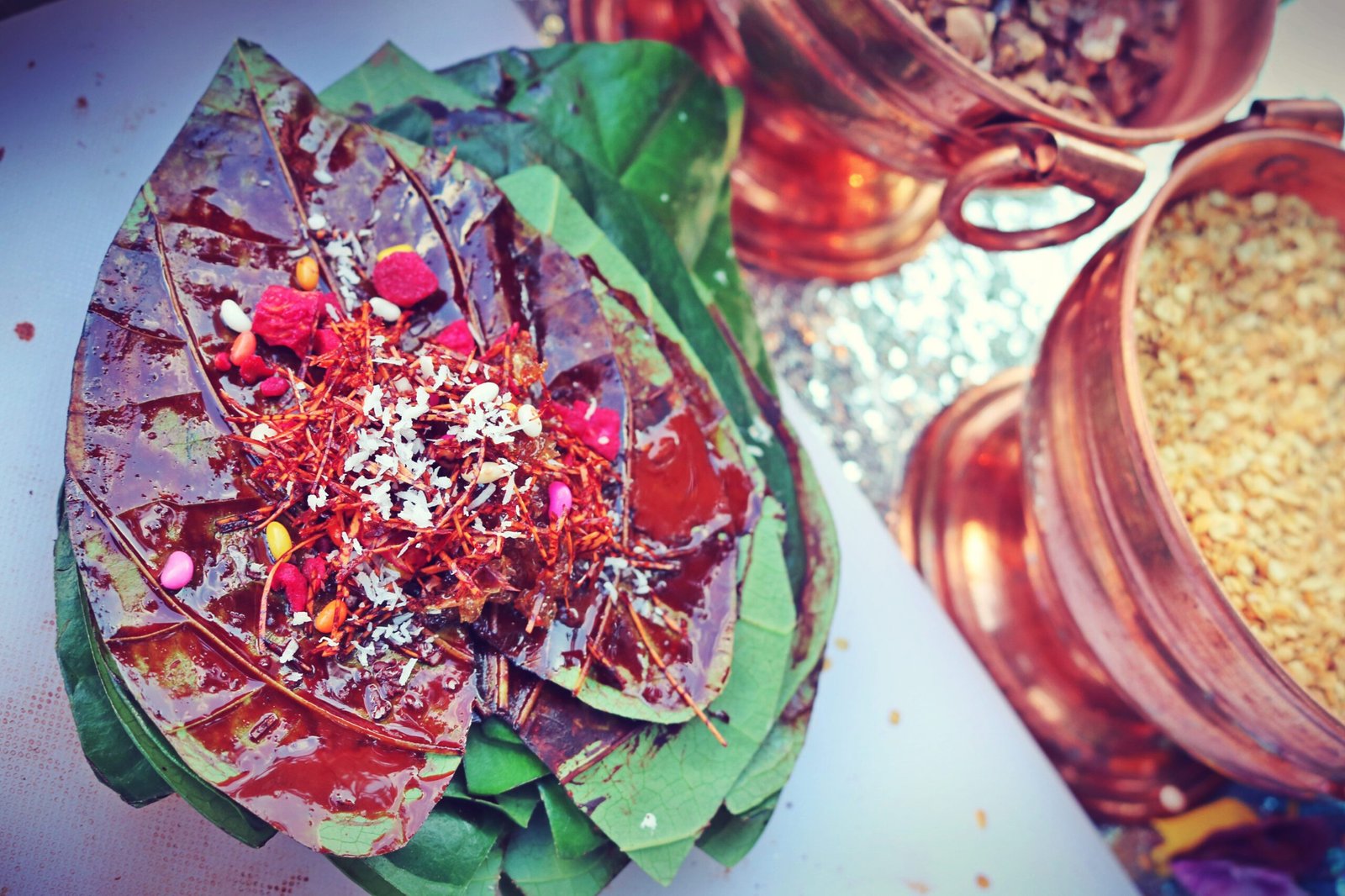20% of the world population chews Paan. In its simplest form, Paan (noun) is betel leaves prepared and used as an aromatic stimulant. The term itself takes its root from Sanskrit parna which means a feather, or a leaf. It is a quintessential natural lipstick as it is called in the Indian Subcontinent.

Paan is a symbolic post-meal intake at majority of events and ceremonies in Southeast Asia and is prepared in variants such as sweet (meetha) and plain (saada), in which candied fruit, sugar and multi-colored candy-shaped fennel seeds are used. Another ingredient that enhances the aromatic quotient of Paan is gulkand, a preserve made from rose petals.

Betel leaves – 1 piece
Katha – 1/2 tsp
Chuna (Lime) – 1/2 tsp
Gulkand – 1 tsp (Store bought)
Sweetened Coconut Flakes – 1/2 Tsp
Glazed Cherries – few, To garnish
Store bought Sweet Paan Mukhwas – 1 Tsp
Dates – 1 piece
Sweet Supari – 1 tsp
Toothpick – few, to seal Paan
First and foremost, thoroughly rinse and dry the betel leaf.
After wards spread katha and very little lime paste or just use 3-4 drops of lime water on the leaf only if you love the taste of lime in your Paan.
Now put all the above ingredients on the leaf and roll one corner and make a triangle or make it like a cone.
Close it and stick the glazed cherry on top of Meetha or Sweet Paan using the toothpick.
Meetha Paan can be preserved for a couple of days by wrapping it in silver foil.